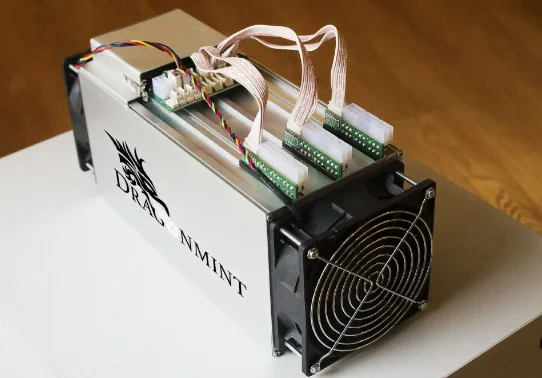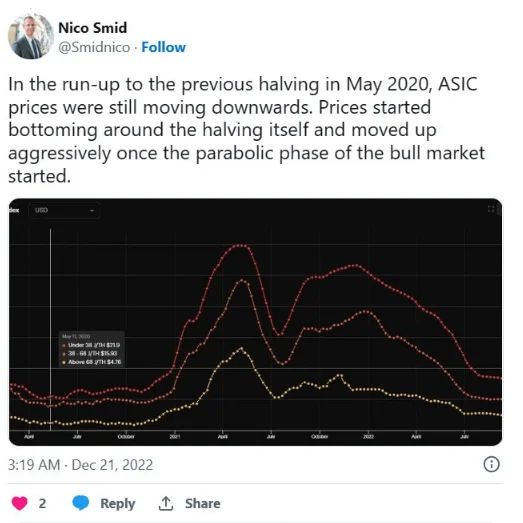Bitcoin ASIC miner prices have dropped in per terahash rate by more than 80% from its peak in 2021 as the crypto bear market continues.

In what is being considered another indicator of a deepening crypto bear market, Bitcoin ASIC miners, or devices specialized for the sole purpose of mining Bitcoin, are presently selling at bottom-of-the-barrel prices last seen in 2020 and 2021.
The most effective ASIC miners, those that produce at least one terahash for every 38 joules of energy, have seen their prices drop 86.82% from a high of $119.25 per terahash on May 7, 2021 down to $15.71 as of December 25.
The Antminer S19 from Bitmain and the Whatsminer M30s from MicroBTC are examples of miners in this category. The same is true for mid-range computers, whose average price has dropped significantly by 89.36% from its high price of $96.24 on May 7, 2021, to the current average of $10.23.
The least effective machines, on the other hand, are now priced at $4.72, a 91% decrease from their high of $52.85. These devices demand more than 68 Joules per terahash. It was last priced similarly on or around November 5, 2020.

Large Bitcoin mining firms that have battled to remain profitable during the bear market are mostly to blame for the price decline. To keep afloat, many of these firms have either filed for Chapter 11 bankruptcy, taken on debt, or sold their BTC holdings and equipment.
Core Scientific, Marathon Digital, Riot Blockchain, Bitfarms, and Argo Blockchain are a few of the companies that have completed that.
However, some eager purchasers have responded to the sharp price decline. Numerous Russian-based mining operations, like BitRiver, are among them. With some modern technology, they can mine 1 BTC in the energy-rich country for approximately $0.07 per kilowatt-hour, taking advantage of the comparatively cheap power prices in the country.
Although it’s difficult to predict which price direction ASIC miners will take next, Nico Smid of Digital Mining Solutions noted in a tweet on December 21 that ASIC miner prices bottomed at Bitcoin’s most recent halving cycle on May 11, 2020, and quickly moved up afterward — something that could play out in Bitcoin’s upcoming halving cycle, which is anticipated to occur on April 20, 2024.

